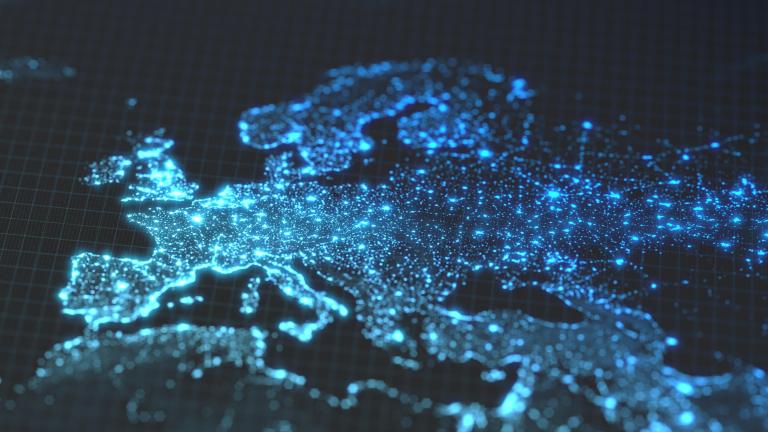When ChatGPT was introduced, allowing direct communication with artificial intelligence (AI), no one could have predicted that the same innovators would soon create a system capable of generating hyper-realistic videos from mere text descriptions. The AI revolution is now upon us, and it is controversial, ground-breaking and transformative. How it will change the world is still unclear, but as most innovations do, it has the potential to change everything.
The AI Dilemma
Artificial intelligence is currently the hottest topic in the tech world. Engineers, tech industries and startups all strive to create more and more powerful AI systems that are capable of doing remarkable things for us. However, opinions are divided on whether this is a good thing or not and what the purpose of developing AI actually is.
The concerns are mainly about the ethical implications of AI and security. How will we be able to determine whether a video generated by AI is real or false footage? How can we ensure that it will not be used for political purposes? Is it a threat to human jobs in a variety of occupations, considering how efficient and productive AI can be? Some people are worried that AI will take over the world and replace humans, as seen in the movie Ex Machina.
Whether you are a fan of this technology or not, the truth is that AI is already here, and as with most revolutionary inventions, it has both good and bad sides. The obvious benefits are enhancing our lives and work, improving healthcare, education, business and so on. In fact, humans have always progressed, and this is just the next step in the progression of the industrial revolution. But just how revolutionary is it?
“If our era is the next Industrial Revolution, as many claim, AI is surely one of its driving forces.”
Fei-Fei Li, a China-born American computer scientist
A New Visual AI Revolution
OpenAI has unveiled Sora, its newest artificial intelligence system, which can transform written descriptions into realistic visuals. Currently, the Sora AI model can make videos up to 60 seconds in length based on text alone or text and image instructions. A portion of Sora’s foundation is drawn from OpenAI’s earlier innovations, including the GPT big language models and the picture generator DALL-E.
How OpenAI’s Innovation Turns Text into Hyper-Realistic Videos
The video below introduces Sora and shows how the system can make a video using text only. The examples include golden retrievers playing in the snow, a film trailer presenting a realistic looking actor, and a convincing view of a woman in Tokyo, as though it has been transmitted from someone’s camera. All of the videos created were accurate to the text commands that were inputted, were presented in very realistic views like cameras or drones, and as OpenAI states, ‘generated by Sora without modification’.
Sora Launching
Sora is the latest AI innovation that can produce realistic videos from text data. It is not publicly available yet as OpenAI has limited its use to a select group of visual artists, designers, and filmmakers who test it and provide input to the company. However, the company has plans to release it to the public in the near future.
So far, a few experts have expressed their opinion about the Sora model. For instance, Jim Fan from Nvidia said it is a ‘data driven physics engine’ which could simulate worlds, considering it a much better innovation than the other OpenAI ‘creative toys’. On the other hand, Gary Marcus, the CEO of Robust.AI and Geometric Intelligence (acquired by Uber), was questioning the generative AI model that Sora employed for video synthesis as well as the accuracy of the videos that it produced: ‘The system is trying to approximate the world, but it just isn’t very good at that job’. According to CBS News, the new technology left some AI experts ‘terrified’.
The Risk of AI-generated Content
The visual-generative AI revolution means changes in the way of working for potentially most industries, from creative professionals, like designers, content creators, and filmmaking where actors could be replaced or footage altered, to media and entertainment companies and journalists. While there is excitement about the advancement of AI technology due to this video creation model, there are concerns raised about the possibility that artificial deepfake videos would exacerbate misinformation and disinformation around the world, for instance, in the 2024 global elections. Some celebrities have already been targeted and harassed by fake news. For example, Scarlett Johansson’s AI-generated voice and face were used in an advertisement without her permission.
To guarantee the responsible use of visual-generative AI, strong ethical standards, legal frameworks, and technical solutions (such as authenticity checking and watermarking) will be required more and more as the technology develops. Last year, U.S. President Joe Biden announced the release of a new executive order on AI, which calls for additional safety precautions and watermarking to clearly identify work created by artificial intelligence.
The Future of Visual-Generative AI
The industry is witnessing a paradigm shift, and the future of visual media will dramatically change soon. The AI visual systems will become more sophisticated and allow for the creation of increasingly elaborate and realistic images, movies, and virtual environments. This could lead to creative methods for conveying stories, customised content creation, and engaging virtual and augmented reality experiences. The development of AI does not particularly mean that humans will lose their jobs; rather, it creates opportunities for human-AI cooperation to produce previously unimaginable results.
However, with the lack of suitable laws, this potential carries a number of serious concerns. To reduce these dangers, it is crucial that businesses like OpenAI, Google, Meta, and startups like Runway that are involved in text-to-video AI projects follow strict guidelines. On OpenAI’s page, there is information about the company ‘taking several important safety steps ahead of making Sora available in OpenAI’s products’ so let’s hope the proper AI era starts when governments and organisations have the right rules and regulations to begin with.











